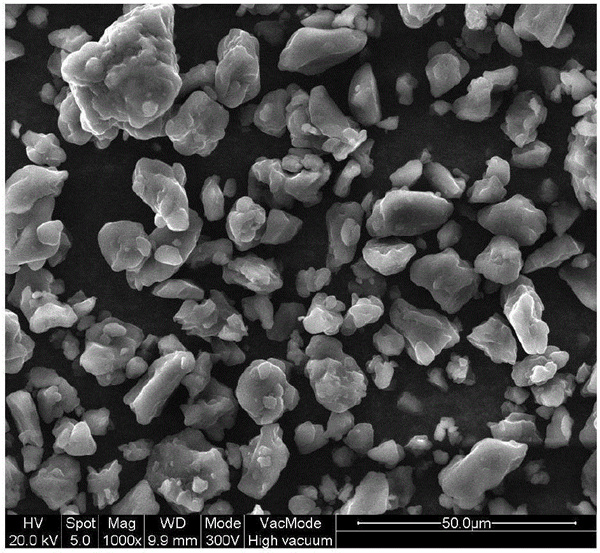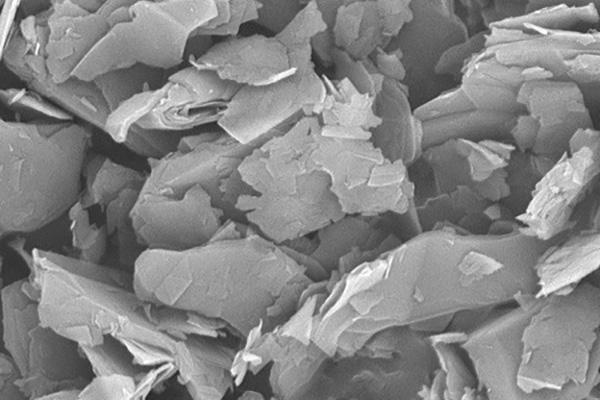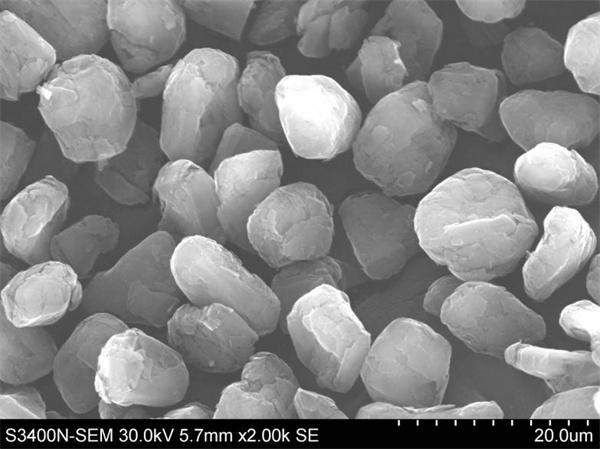Email: info@karssenmetal.com Tel: +86 18147353336
With the rapid development of the global new energy industry, there has been unprecedented strong demand for new energy vehicles, energy storage equipment and consumer electronic products, and the demand for graphite anode materials has also increased significantly. As the key material for lithium-ion batteries, graphite anode material has gradually become the mainstream of the anode material market, accounting for about 70% of the market share. Since the development of lithium-ion batteries, various cathode material systems such as lithium cobalt oxide, lithium iron phosphate, lithium nickel cobalt manganate, lithium nickel cobalt aluminate, etc. have been derived, but the graphite anode material system has been used until now.

Graphite Anode Microstructure
Graphite anode materials are usually divided into natural graphite and artificial graphite. Natural graphite comes from mines and is made through flotation, spheroidization and surface coating. Artificial graphite is derived from coal and petrochemical by-products. The by-product coal tar pitch or vacuum residue of petroleum or coal chemical industry is used as raw material, and it is made into needle coke by delayed coking, and is made by granulation and graphitization.
Natural Graphite VS Artificial Graphite
1. Natural graphite
Natural graphite can be divided into flake graphite and earthy graphite. The anode material is usually flake graphite, which has large reserves, low cost, low potential and stable curve. In a suitable electrolyte, its initial coulombic efficiency(ICE) is 90%~93%, reversible capacity can reach 340~370 mAh·g-1, which is one of the most mainstream lithium-ion battery anode materials.
However, the regular layered structure of natural graphite leads to its high anisotropy, which leads to delayed intercalation of lithium ions and insufficient contact between graphite particles and current collectors, which is also the main reason for the low rate performance of natural graphite. But treatment by mechanical grinding could increase the isotropy of natural graphite. Incompatibility with propylene carbonate (PC)-based electrolytes with good low temperature performance is also the main disadvantage of natural graphite, which is usually modified by adding additives to the electrolyte and coating the surface of graphite.

Flake graphite
Modification of natural graphite:
At present, natural graphite modification methods mainly include spheroidization treatment, surface treatment and doping treatment.
Graphite spheroidization makes its particle size: controllable, distribution concentrated , round, smooth surface, tap density increased and specific surface area reduced, thereby reducing the reaction between graphite and electrolyte; Surface treatment (further divided into surface oxidation, surface fluorination and surface pore structure) is to improve the rate performance and cycle stability of graphite through chemical reaction changes; doping treatment shows different optimization effects due to different doping elements, such as adding elements with the same lithium storage ability (Si, Sn) improves the specific capacity of graphite anode materials.
Comprehensive comparison shows that compared with other modification methods, graphite spheroidization modification has the advantages of simple process, low cost, and no introduction of impurities.It is the most common treatment method on the market at present, and it is an indispensable process link in the production process of natural graphite anode materials.

Spherical graphite with a content of more than 95%
At present, the spheroidization methods include jet milling and grinding, both of which use mechanical force to spheroidize natural graphite. The spheroidization process is equivalent to the granulation process of flake graphite, and its anisotropy problem is improved by curling the flake graphite into a ball. During this process, the flake graphite collides with each other, breaks and curls under the impact of the airflow to form a core, and the fine flakes with smaller particle size adhere to the surface of the core to form spherical graphite. However, after spheroidization, the sheet edge of flake graphite is directly exposed on the surface of spherical graphite, which affects the stability of the anode material. Therefore, it is necessary to coat the surface of spherical graphite with a modified layer of amorphous carbon material or metal and its oxide.
2. Artificial graphite
The preparation of artificial graphite needs to go through four major processes of "crushing, granulation, graphitization, and screening" and many small processes. The two links of granulation and graphitization have high technical barriers.
The aggregates of artificial graphite are divided into three categories: coal-based, petroleum-based and coal-petroleum mixed series, among which coal-based needle coke, petroleum-based needle coke and petroleum coke are the most widely used. Petroleum coke is a combustible solid product obtained by coking of petroleum residue and petroleum pitch. It is the main raw material of artificial graphite. It is divided into green coke and calcined coke according to the different heat treatment temperatures. Needle coke is a kind of high-quality coke with obvious fibrous structure. It has the advantages of good electrical and thermal conductivity in the direction parallel to the long axis of the particles, small thermal expansion coefficient, etc., and is easy to graphitize; Pitch is one of the main products of coal tar deep processing. Used as a binder and impregnant in the production of graphite.
As far as the current market is concerned, needle coke is used as raw material for high-end anode material, cheap petroleum coke is used as raw material for low-end anode material, and Pitch acts as a binder to bond different particles together.
During the graphitization process, multiple graphitized micro-domains (2~5nm) arranged according to the needle-like texture in the needle coke raw material are closely connected to form graphitized domains of 20~70nm, thus forming a good isotropic texture. This crystal structure endows artificial graphite anode materials with some advantageous properties, and has become a mainstream product in power lithium battery anode material market in recent years. After continuous modification research, artificial graphite has approached or even surpassed natural graphite in terms of capacity, ICE, and cycle life, but high-temperature graphitization also brings high-cost defects.

Artificial graphite
Graphite is the most widely used and most mature anode material. The main problem at present is that the energy density is difficult to meet the growing market demand. The electrochemical properties of the interface of the graphite anode material can be changed by chemical modification and surface coating. At present, it is an important way to improve the performance of high-end artificial graphite.
Modification of artificial graphite:
The graphitization process is a process in which the carbonaceous material is heated to 2300~3000 ℃ by making full use of resistance heat, so that the carbon of the amorphous turbostratic structure is transformed into an ordered graphite crystal structure. The artificial graphite anode material has the corresponding function of lithium battery anode by successfully converting the carbon structure into a graphite structure through graphitization high temperature treatment. The anode material can significantly improve the specific capacity, ICE, specific surface area, compaction density, electrical conductivity, chemical stability and other performance indicators of the anode material through graphitization. Therefore, controlling and mastering the graphitization process technology is an important way to ensure the quality of negative electrode materials.
Since the development of carbon materials for lithium-ion batteries, graphite materials have always been the mainstream anode materials due to their special microstructure, mature production and modification processes, and large raw material reserves. And it will continue for a long period of time, and other types of new materials are gradually industrialized and started to be used in the field of power batteries.
At present, the global anode market has stabilized, and the demand is increasing steadily every year. However, the increase in cost prices, the increase in anode companies, and the intensification of industry competition have resulted in the compression of the overall profits of the industry. It is expected that the growth rate of global anode material production will gradually slow down in the next few years, and the development and application of new materials and new technologies will be the key to breakthrough bottlenecks in the industry.
Isostatic graphite blocks are an important graph
Graphite rotor belongs to graphite material, whi
Graphite sheets have many important roles in the
Contact: Bateer
Phone: +86 18147353336
Tel: +86 18147353336
Email: info@karssenmetal.com
Add: Room D204-2203, Innovation Building, Baotou Light Industry Vocational Technical College, 19 Jianhua Road, Qingshan District, Baotou City, Inner Mongolia, China.